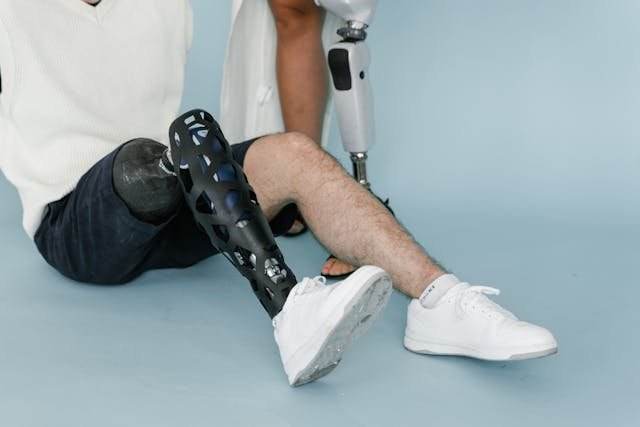When a person is born with the absence of limbs on both sides, either upper or lower, life takes a very different path from the beginning. Bilateral congenital limb loss presents a set of challenges that are unique, both physically and emotionally. Unlike injuries that occur later in life, congenital conditions require lifelong solutions that grow and adapt with the person. This means prosthetics for such individuals must be far more than functional — they must be personal, responsive, and capable of changing as needs evolve.
At Robobionics, we have worked with many individuals and families dealing with bilateral congenital limb differences. These ca ses often require more innovation, more collaboration, and more care. Each person’s needs are different, and a one-size-fits-all solution simply doesn’t work. That’s why we focus on smart design, modular systems, and early intervention that supports independence from the start. In this article, we’ll explore how prosthetics for bilateral congenital limb loss are changing, and how new innovations are opening up new possibilities.
Understanding Bilateral Congenital Limb Loss
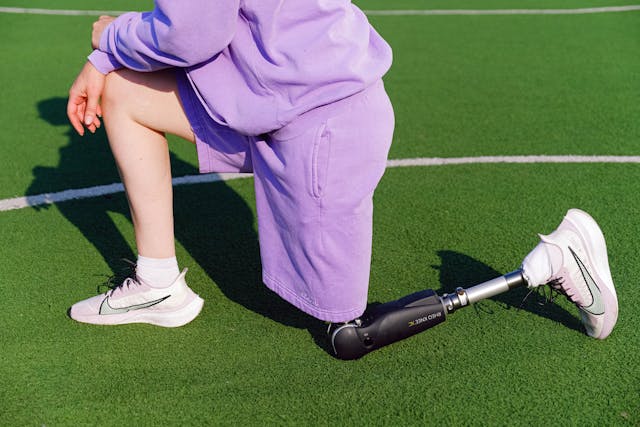
Congenital limb loss happens when a baby is born without one or more limbs due to developmental issues in the womb. In bilateral cases, limbs are missing on both sides of the body. This could mean both hands, both arms, both legs, or a combination of these. Unlike traumatic limb loss, congenital conditions usually involve no phantom pain or memory of using the limb, but they often bring challenges in motor skills, balance, posture, and independence.
What makes bilateral limb loss different is the way it affects early development. A child without both arms, for example, learns to explore, eat, and play differently from a child with one or two natural arms. This creates new learning patterns and habits that shape the brain and body from day one. Similarly, children with no lower limbs need to learn new ways of sitting, standing, and moving. Prosthetics in these cases must be introduced early and must support not just function but learning as well.
At Robobionics, we understand how important early adaptation is. The body learns quickly, especially in childhood. When the right prosthetic device is introduced at the right time, the child can grow up using it as naturally as their own body. We design systems that support this process, offering light, durable, and easy-to-control prosthetics that can be adjusted as the child grows and their needs change.
Emotional and Social Impact from an Early Age
While the physical aspect of bilateral congenital limb loss is more visible, the emotional part is just as important. Children often become aware of their differences early in life. How others react, how parents communicate about the condition, and how the child experiences their environment all contribute to emotional development. The presence of a prosthetic limb can help the child feel included and confident, especially when it supports daily tasks and interaction with peers.
Parents may worry about how to introduce the prosthetic to their child, how much to encourage its use, or how others will react. These are all natural concerns. But the good news is that children are incredibly adaptive. When prosthetics are introduced early and made part of the child’s routine in a natural, positive way, the emotional benefits are often greater than expected. It gives the child a sense of ability and control that grows with time.
Robobionics believes in designing prosthetics that children feel proud to wear. Our designs include child-friendly colors, smooth surfaces, and lightweight materials that are comfortable to use throughout the day. We also guide parents and caregivers on how to create a nurturing, non-stressful environment that helps children accept and embrace their prosthetics as a tool for growth and self-expression.
Clinical Evaluation and Personalization
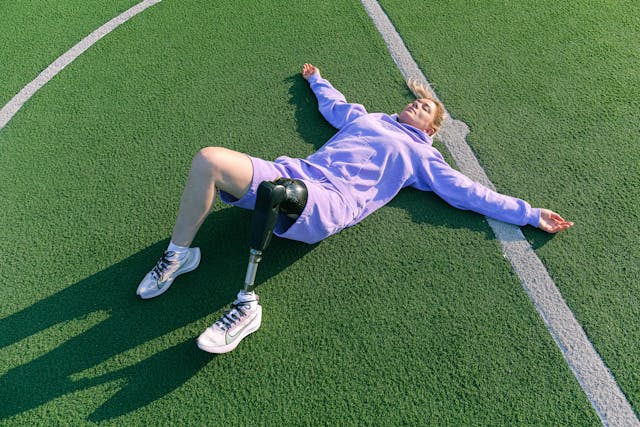
Every case of bilateral congenital limb loss is different. Some children may have partial limbs, while others may have none. This variation affects how the prosthetic is fitted and what kind of technology is needed. That’s why the first step in any prosthetic journey is a thorough clinical evaluation. This includes checking limb length, joint mobility, muscle strength, and body posture, along with talking about daily routines and goals.
The evaluation helps identify what movements the person already uses and what functions the prosthetic needs to support. For instance, some children may already use their feet or mouth to complete tasks typically done by hands. In such cases, the prosthetic must either enhance that movement or introduce new capabilities that add value without causing frustration. Personalization is key — not just in fit and size, but in design and function.
At Robobionics, every prosthetic begins with an in-depth evaluation. We work closely with occupational therapists, physiotherapists, and family members to design a device that fits the user’s life, not just their limb. This approach ensures that our prosthetics are comfortable, easy to use, and truly supportive of the user’s goals — whether that means writing, feeding, walking, or simply playing without limits.
Designing for Upper Limb Bilateral Absence
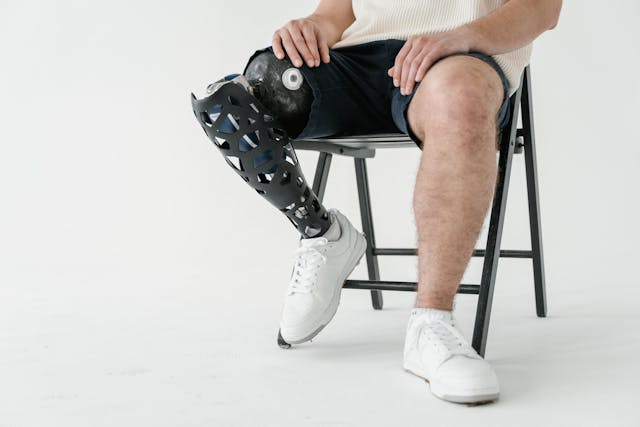
When both upper limbs are absent, the user relies almost entirely on prosthetics for reaching, holding, and manipulating objects. This type of limb loss is one of the most complex to support because it involves both sides of the body working together. The prosthetics must be light, responsive, and easy to control — especially for children and teens who are still developing motor skills and learning to navigate the world independently.
Some users prefer passive prosthetics that provide support for balance or basic positioning, while others benefit from functional arms with grip control, wrist rotation, and even elbow motion. In bilateral cases, both devices must be coordinated, which adds an extra layer of training. Myoelectric or EMG-controlled arms are helpful for users who have muscle activity near the shoulder or chest, allowing for more intuitive control.
Robobionics offers smart bionic hands like the Grippy™ system, which can be adapted for bilateral use. These hands are equipped with multi-grip technology, allowing users to handle a wide variety of tasks. With sensors placed strategically, they can pick up signals from available muscles and translate them into smooth, natural movement. For children with bilateral upper limb loss, this kind of intuitive control means greater independence and less reliance on others for everyday tasks.
Training and Skill Building with Dual Devices
Learning to use two prosthetic arms is a step-by-step process. Even for adults, this coordination takes time and practice. For children, training often begins with basic motion — such as opening and closing the hand — and then progresses to coordinated tasks like lifting objects, using tools, or performing daily care routines. The brain must learn to control both devices as if they were natural limbs.
Therapy and guided training are essential during this phase. A child may begin by using the devices during play, like stacking blocks or moving toys from one place to another. These small actions help build confidence and fine-tune control. Over time, the child learns more complex actions, including feeding, dressing, and school-related tasks like writing or turning pages.
At Robobionics, we don’t just deliver prosthetics — we stay involved through the entire training process. Our team includes therapists and rehabilitation experts who help users practice using their prosthetic arms in real-life settings. We also offer gamified rehab tools to keep children engaged and motivated while building coordination. Our goal is to turn training into a routine that’s both effective and enjoyable.
Using Technology to Support Learning
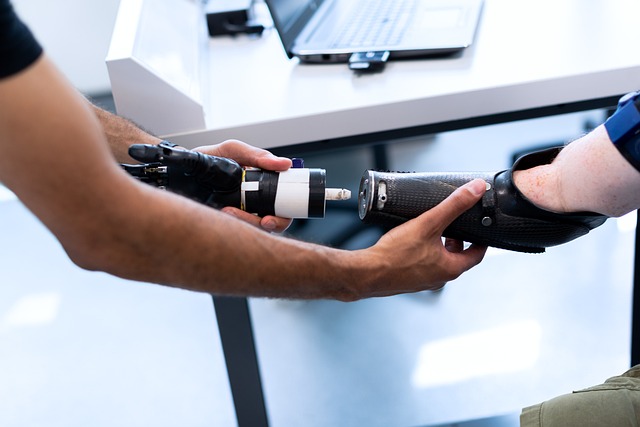
Children with bilateral limb differences may not have a natural reference for how hands and arms should move. That’s why assistive technology plays a critical role in the learning process. Virtual environments, biofeedback tools, and interactive games help bridge the gap between muscle signals and real-world actions. These tools make it easier for children to understand how their prosthetic responds to their body and how to control it with greater precision.
Using technology also helps reduce frustration during early stages. If a child presses too hard or moves too quickly, the software can guide them toward smoother, more controlled movement. As they get better, the system can increase difficulty, helping them build confidence without feeling overwhelmed. This adaptive approach keeps the learning process aligned with the child’s pace.
Robobionics incorporates tech-enabled training into our fitting and follow-up services. Our systems are child-friendly and easy for families to manage at home. With the help of these tools, users can practice daily and track their improvement over time. We believe that the right support, combined with the right technology, gives children the power to thrive.
Supporting Lower Limb Bilateral Prosthetics
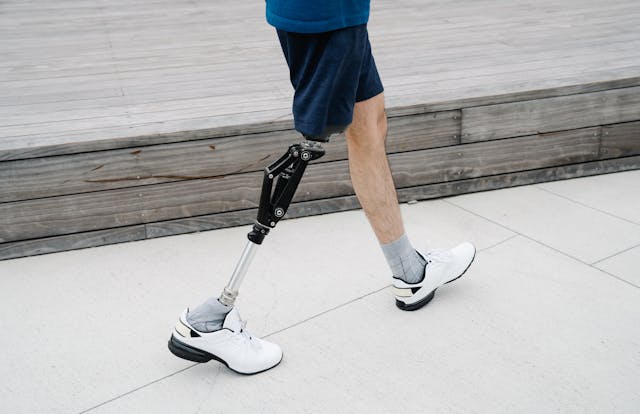
When both lower limbs are missing, prosthetics must support the entire body weight and provide full mobility. This includes standing, walking, running, and balancing on uneven ground. For young children, prosthetics must also support developmental milestones like crawling, climbing, and eventually participating in physical education and sports. Durability, comfort, and adjustability are critical in these cases.
Lower limb prosthetics come in different designs depending on the level of limb absence. Some children may have knee joints but no lower legs, while others may require full-leg support from the hip down. Prosthetic legs must match not only height and stride but also energy level and lifestyle. For active children, spring-like foot designs may offer better performance. For toddlers, lightweight legs with stable bases help build confidence in early movement.
Robobionics offers modular lower limb systems that can be adjusted in length and function as the child grows. Our feet and knee modules are designed to absorb shock, support posture, and allow smooth walking patterns. We work closely with families to update these systems regularly, making sure the child always has the right fit and feel — without long wait times or high costs.
Focus on Posture and Balance
One of the biggest challenges with bilateral lower limb prosthetics is maintaining proper posture and balance. Without natural feet or legs, the body must learn to stabilize in new ways. Poor posture can lead to back pain, joint issues, or fatigue over time. That’s why lower limb prosthetics must be aligned precisely and adjusted as the child’s body develops.
Physical therapy plays a big role in helping children learn how to stand, walk, and move safely with prosthetics. Therapists teach balance exercises, train the body to shift weight correctly, and help build core strength. This not only improves comfort but also helps prevent long-term health problems related to uneven movement or compensation patterns.
At Robobionics, every lower limb fitting includes postural assessment and movement training. We work alongside therapists to ensure the child is walking confidently and comfortably. We also provide easy-to-adjust sockets and connectors, so families can make quick updates between check-ins. Our goal is not just to provide mobility — but to support healthy movement that lasts for life.
Helping Children Explore and Play
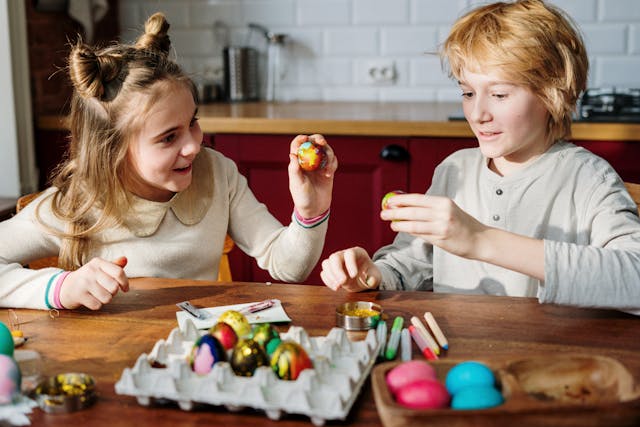
Mobility is about more than just walking. For children, it’s about exploring, discovering, and joining in on everyday play. Whether it’s running on the playground, kicking a ball, or riding a cycle, children need prosthetics that support curiosity and fun. This is especially important in bilateral lower limb loss, where confidence in movement can greatly affect how the child interacts with others.
Children who feel confident using their legs are more likely to join group games, attend school events, and take part in family outings. That’s why prosthetics must feel secure, reliable, and comfortable during activity. Slipping, wobbling, or pain can cause fear or hesitation, which over time may lead to withdrawal from social life.
Robobionics designs its lower limb systems with play in mind. We test our devices in real-world environments and gather feedback from children and families to improve design. Our prosthetic legs are made for running, jumping, and climbing — just like any child should be able to do. Because when children can play freely, they grow freely too.
Conclusion: Innovation for Every Unique Journey
Bilateral congenital limb loss requires more than a standard solution. It demands creativity, compassion, and a commitment to building prosthetics that truly match the user’s world. Every child, every adult, and every family dealing with this journey has different needs. At Robobionics, we believe those differences should shape the device — not the other way around.
Through modular designs, advanced control systems, personalized training, and technology-led learning, we’re helping individuals with bilateral congenital limb loss live full, active lives. Our mission is to make prosthetics that aren’t just helpful, but empowering — devices that support growth, independence, and confidence at every stage.
If you or your child is living with bilateral limb loss and looking for a prosthetic solution that fits your life — not just your limb — contact Robobionics today. Book a free consultation, explore our demo models, and let’s build the future, together.



